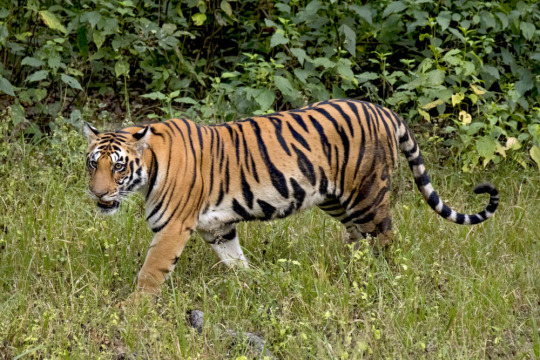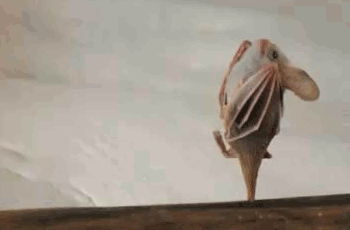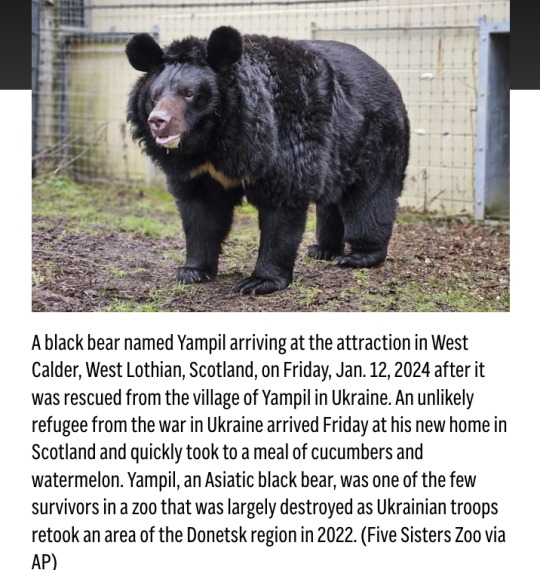#international union for conservation of nature
Text

#HuntedUntilExtermination
Northern Raven...
I am extremely pissed off today of our "changing and depending on which region of Canada we are living in", because laws are flexible and can change at any time.
Example: Nearly all native birds in Canada are protected, even if they don't migrate. But this law concerns only the category of small birds. Which is terribly weird for me because these small birds are here in abundance, like thousands and more of them. But for most native species as birds of prey, they are excluded from being protected, like; Hawks, Owls, Eagles, Falcons, Kingfishers, Ravens, Crows, Jays, as for three other species in the blackbird family, like; Rusty Blackbirds, Common Grackles, and Brown‐Headed Cowbirds. Unbelievable if we think about the White Headed Eagles who can have only one clutch of 1-3 eggs per year, (and the first born, the strongest one, can kill the other two to have more food for him, which mother Eagle will also let him do) and can be hunted? As for the rarely seen, Royal Eagle, who is always moving further to North for fear of human. Weird right!
Regarding to the BC Wildlife Act, "Ravens are Schedule C Wildlife, meaning they can be hunted any time, but you do need a hunting licence, unless !!! "you are hunting them on your property or they are damaging your property." Ravens are protected under the, Wildlife Act, except !!! in those regions of the province that have a hunting season for them. Ravens can trigger a wide range of human reactions. It may be disgust for some people to see them feeding on roadkills.Or to see them from your bedroom window can be annoyingly diligent at letting you know that it is 4 o'clock a.m. For Native people, Ravens are still honoured in many First Nations’ cultures while for ranchers can be horrified at them to find the eyes of newborn beef calves pecked out." -bcmag
Ravens, foxes, wolves,… they only try to survive like any other wild animals. It is called, the food chain… hello??? Maybe we should exterminate Roosters too?
So to say, Ravens are protected by the Fish and Wildlife Conservation Act in Canada but, don't have anymore any form of legal protection today.
It is like cannabis; it is against the law to grow marijuana in Québec but if you "live" in Canada, it is legal and you can!
What kind of Canadian bullshit law is this. Ravens have been hunted, trapped, poisoned, etc… for so many years until practically extermination. Ravens even teach their siblings to stay away from human as far as possible for all these reasons, but for some people, it is not enough.
So yes, I am right now fucking pissed off at our country. Ravens can now be hunted "again" because of some people that are disgusted by them.
@BenAdrienProulx
May 15th, 2024
#Hunted Until Extermination#Northern Raven#Ravens#Corvus corax#Crow#Corvus brachyrthynchos#Silent Hill#Roadkill#Wildlife Need Protection#IUCN#International Union for Conservation of Nature#ECCC#Environment and Climate Change Canada#FeederWatch#Count Feeder Birds for Science#NCC#Nature Conservancy of Canada#Raw Nature#Nature Photography#Nature Canada#Wild Bird Photography#Wildlife Photography#Animal Photography#Mountainous Parts of the Northern Hemisphere#Canada#The RavenKeeper
128 notes
·
View notes
Text

“Indian Wolf pack”
“The Indian wolf, a subspecies of the gray wolf, is known for its playful and noisy behavior. However, their playful moments in the wild are becoming increasingly rare as their population is declining throughout the Indian subcontinent, to the point of being considered endangered by the International Union for Conservation of Nature.”
by Siddhartha Ghosh
2023 Siena International Photo Awards
#siddhartha ghosh#photographer#siena international photo awards#indian wolf#wolf#animal#mammal#wildlife#gray wolf#international union for conservation of nature#endangered#nature
51 notes
·
View notes
Text
The thresher shark has exceptionally long caudal fins or tail fins that can sometimes be as long as their body length, which can reach 6 meters. 🦈
📹: mai_enjoooy
#thresher shark#caudal fins#International Union for Conservation of Nature#mackerel shark#nature conservation#tail fins
11 notes
·
View notes
Text

The number of endangered tigers around the world is 40 percent higher than previously thought, according to new data from the International Union for Conservation of Nature (IUCN).
The group estimates that there are between 3,726 and 5,578 tigers in the wild, up significantly from its last assessment in 2015. The new total is a reflection of both improved monitoring and the impact of conservation efforts.
“Although tigers are still endangered, their populations appear to be stable or increasing,” Jon Paul Rodríguez, chair of the IUCN Species Survival Commission, said in a statement. “We need to learn from these conservation successes, share them with the public, and increase our investment in evidence-based conservation action.”
#tiger#tigers#conservation#International Union for Conservation of Nature#IUCN#part of it is better monitoring of the tigers#BUT PART OF IT IS CHANGE FOR THE BETTER#oh brave new world
6 notes
·
View notes
Link
#albatrosses#biodiversity#birds#bullers albatross#candice gaukel andrews#conservation#endangered species#environment#galapagos#herman melville#international union for conservation of nature#iucn#laysan albatross#moby dick#natural habitat adventures#nathab#nature#nature lovers#new zealand#new zealand south island#royal albatross#samuel taylor coleridge#taiaroa head nature reserve#rime of the ancient mariner#wandering albatross#wild#wildlife#world wildlife fund#wwf
0 notes
Text
Comprehensive global database of marine and terrestrial protected areas.

The World Database of Protected Areas (WDPA) is the most comprehensive global database of marine and terrestrial protected areas, updated on a monthly basis, and is one of the key global biodiversity data sets being widely used by scientists, businesses, governments, International secretariats and others to inform planning, policy decisions and management. The WDPA is a joint project between United Nations Environment Programme and the International Union for Conservation of Nature (IUCN). The compilation and management of the WDPA is carried out by United Nations Environment Programme World Conservation Monitoring Centre (UNEP-WCMC), in collaboration with governments, non-governmental organisations, academia and industry. There are monthly updates of the data which are made available online through the Protected Planet website where the data is both viewable and downloadable. Data and information on the world's protected areas compiled in the WDPA are used for reporting to the Convention on Biological Diversity on progress towards reaching the Aichi Biodiversity Targets (particularly Target 11), to the UN to track progress towards the 2030 Sustainable Development Goals, to some of the Intergovernmental Science-Policy Platform on Biodiversity and Ecosystem Services (IPBES) core indicators, and other international assessments and reports including the Global Biodiversity Outlook, as well as for the publication of the United Nations List of Protected Areas. Every two years, UNEP-WCMC releases the Protected Planet Report on the status of the world's protected areas and recommendations on how to meet international goals and targets. Many platforms are incorporating the WDPA to provide integrated information to diverse users, including businesses and governments, in a range of sectors including mining, oil and gas, and finance. For example, the WDPA is included in the Integrated Biodiversity Assessment Tool, an innovative decision support tool that gives users easy access to up-to-date information that allows them to identify biodiversity risks and opportunities within a project boundary. The reach of the WDPA is further enhanced in services developed by other parties, such as the Global Forest Watch and the Digital Observatory for Protected Areas, which provide decision makers with access to monitoring and alert systems that allow whole landscapes to be managed better. Together, these applications of the WDPA demonstrate the growing value and significance of the Protected Planet initiative.
#International Union for Conservation of Nature (IUCN)#environment#Integrated Biodiversity Assessment Tool#protected areas#United Nations Environment Programme World Conservation Monitoring Centre#UNEP-WCMC#Terrestrial protected areas#marine protected areas#Protected Planet initiative
3 notes
·
View notes
Text
"In one of Africa’s last great wildernesses, a remarkable thing has happened—the scimitar-horned oryx, once declared extinct in the wild, is now classified only as endangered.
It’s the first time the International Union for the Conservation of Nature (IUCN), the world’s largest conservation organization, has ever moved a species on its Red List from ‘Extinct in the Wild’ to ‘Endangered.’
The recovery was down to the conservation work of zoos around the world, but also from game breeders in the Texas hill country, who kept the oryx alive while the governments of Abu Dhabi and Chad worked together on a reintroduction program.
Chad... ranks second-lowest on the UN Development Index. Nevertheless, it is within this North African country that can be found the Ouadi Rimé-Ouadi Achim Faunal Reserve, a piece of protected desert and savannah the size of Scotland—around 30,000 square miles, or 10 times the size of Yellowstone.
At a workshop in Chad’s capital of N’Djamena, in 2012, Environment Abu Dhabi, the government of Chad, the Sahara Conservation Fund, and the Zoological Society of London, all secured the support of local landowners and nomadic herders for the reintroduction of the scimitar-horned oryx to the reserve.
Environment Abu Dhabi started the project, assembling captive animals from zoos and private collections the world over to ensure genetic diversity. In March 2016, the first 21 animals from this “world herd” were released over time into a fenced-off part of the reserve where they could acclimatize. Ranging over 30 miles, one female gave birth—the first oryx born into its once-native habitat in over three decades.
In late January 2017, 14 more animals were flown to the reserve in Chad from Abu Dhabi.
In 2022, the rewilded species was officially assessed by the IUCN’s Red List, and determined them to be just ‘Endangered,’ and not ‘Critically Endangered,’ with a population of between 140 and 160 individuals that was increasing, not decreasing.
It’s a tremendous achievement of international scientific and governmental collaboration and a sign that zoological efforts to breed endangered and even extinct animals in captivity can truly work if suitable habitat remains for them to return to."
-via Good News Network, December 13, 2023
#chad#abu dhabi#north africa#rewilding#endangered species#conservation#zoology#conservation biology#oryx#good news#hope#texas#big game#animals#endangered#environmentalism#environmental science#zoo#zoos#zoo animals
24K notes
·
View notes
Text
Innovation is advancing ecosystem restoration as a powerful nature-based solution to multiple global challenges.

14.30-15.30 - Panel Discussion entitled'' Innovation is advancing ecosystem restoration as a powerful nature-based solution to multiple global challenges.''
Keynote speaker: Tom Crowther, Eidgenössische Technische Hochschule Zürich (ETH)
Moderator: Khalil Walji, The Center for International Forestry Research and World Agroforestry (CIFOR-ICRAF)
Panelists
Tom Crowther, Eidgenössische Technische Hochschule Zürich (ETH)
Yelena Finegold, FAO Forestry Officer
Chetan Kumar, International Union for the Conservation of Nature (IUCN)
Adrien Leitoro, Nature and People as One
Fabiola Zerbini, Brazilian National Secretariat for Biodiversity, Forests and Animal Rights
#21 march#nature-based solution#fao forestry#panel discussion#international day of forests#International Union for the Conservation of Nature (IUCN)#Nature and People as One#Brazilian National Secretariat for Biodiversity#Forests and Animal Rights#Eidgenössische Technische Hochschule Zürich (ETH)#CIFOR#Center for International Forestry Research and World Agroforestry (CIFOR-ICRAF)
0 notes
Text
IUCN Director General Message for World Wildlife Day 2024.
youtube
Message for World Wildlife Day 2024 by the International Union for Conservation of Nature (IUCN), Director General Mr. Grethel Aguilar.
#IUCN#world wildlife day#wildlife#3 march#Red list of threatened species#statements#International Union for Conservation of Nature (IUCN)#IUCN Species Survival Commission#IUCN Pangolin Specialist Group#Youtube
0 notes
Text
VARIOUS TENDER NOTICE FEBRUARY 2024 - IUCN
INTERNATIONAL UNION FOR CONSERVATION OF NATURE TENDER FEBRUARY 2024
TENDER NOTICE
TENDER NO.
TENDER DESCRIPTION
LOCATION
101/02/2024
Provision of Catering/Canteen Services
Nairobi
102/02/2024
Provision of Office Cleaning Services
103/02/2024
Provision of Security Services
104/02/2024
Annual Supply of Office Stationery
105/02/2024
Annual Supply of Drinking Water
106/02/2024
Annual…

View On WordPress
0 notes
Text
EEEEEEEE EEEEEEEEE EEEEEEE

That's right! It's International Bat Appreciation Day! We share our planet with over 1400 species of bat, making the second most abundant mammal order, and they perform a wide variety of ecological roles, from dispersing seeds to pollinating flowers to eating thousands of insects in a single night! Over 200 bat species are listed as Threatened by the International Union for the Conservation of Nature--that is over 14 percent of all bats!
YOU can help endangered bats today by donating to Pennsylvania Bat Rescue at this link. This PA-based organization rehabilitates sick or injured bats and helps educate people like you and me in how we can create more bat-friendly environments.
If you want to learn about particularly-cool bat species native to New Zealand, check out this Consider Nature article on the Pekapeka, the bat that walks:
For the rest of the day, Consider Nature will be bat-bombing Tumblr with some of our favorite bat species to share them with the world!
Alt text: a small brown bat stretching its wings with the kind of fabulous flourish that would impress Ryan Evans.
#animals#nature#science#biology#wildlife#conservation#environment#bats#international bat appreciation day#batbombing
4K notes
·
View notes
Text

#TheRaven
...who just chased a Turkey Vulture out of his territory.
@BenAdrienProulx
April 23th, 2024.
#The Raven#Raven#Wildlife Need Protection#IUCN#International Union for Conservation of Nature#ECCC#Environment and Climate Change Canada#FeederWatch#Count Feeder Birds for Science#NCC#Nature Conservancy of Canada#Nature Photography#Nature Canada#Wild Bird Photography#Wildlife Photography#Animal Photography#Mountainous Parts of the Northern Hemisphere#Canada#The RavenKeeper
323 notes
·
View notes
Photo

American eels—above—are found in fresh waters from Greenland to Venezuela. The European eel and the American eel are both considered endangered by the International Union for Conservation of Nature.
Photo by Shane Gross/Minden Pictures
#shane gross#photographer#minden pictures#american eel#eel#underwater photography#fresh water#greenland#venezuela#international union for conservation of nature#nature
138 notes
·
View notes
Text


By Brian Melley, AP News
13 January 2024
LONDON (AP) — An unlikely refugee from the war in Ukraine — a rare Asiatic black bear — arrived at his new home in Scotland on Friday and quickly took to a meal of cucumbers and watermelon.
The 12-year-old Yampil was named for a village in the Donetsk region where he was one of the few survivors found by Ukrainian troops in the remains of a bombed-out private zoo.
Yampil, who had previously been called Borya, was discovered by soldiers who recaptured the devastated city of Lyman during the Kharkiv counteroffensive in the fall of 2022, said Yegor Yakovlev of Save Wild, who was among the first of many people who led the bear to a new life.
The bear was found in a menagerie that had long been abandoned by its owners.
Almost all the other animals had died of hunger, thirst or were struck by bullets or shrapnel and some were eaten by Russian troops.
Yampil narrowly missed the same fate, suffering a concussion from a projectile that landed nearby.
“The bear miraculously survived,” said Yakovlev, also director of the White Rock Bear Shelter, where the bear recovered.
“Our fighters did not know what to do with him, so they started looking for rescue.”
What followed was an odyssey that your average bear rarely makes, as he was moved to Kyiv for veterinary care and rehab, then shipped to a zoo in Poland, then to an animal rescue in Belgium, where he spent the past seven months, before landing in the United Kingdom.
Brian Curran, owner of Five Sisters Zoo in West Calder, Scotland, said his heart broke when he learned of the plight of the threatened Asiatic black bear.
“He was in terrible condition; five more days and they wouldn’t have been able to save him,” Curran said. “We were just so amazed he was still alive and well.”
The bear was skinny but not malnourished when he was found, said Frederik Thoelen, a biologist at the Nature Help Center in Belgium.
He now is estimated to weigh a healthy 440 pounds (200 kilograms), Thoelen said.
The nature center in Belgium, which usually treats injured wildlife and returns them to their natural settings, has taken several animals rescued from the war in Ukraine, including a wolf, a caracal cat and four lions, though those animals had not experienced the ordeal Yampil endured.
It was remarkable how calm Yampil was when he arrived in Belgium, Thoelen said.
The bear was trained in the past two weeks to move from his enclosure to the crate that would transport him across Belgium to Calais, France, then across the English Channel on a ferry to Scotland.
Pastries from a local bakery were used for good measure to lure him Thursday into the cage, where he was sedated for the journey.
“We want to use the food that he likes most, and for most bears — and for people also — it’s sweet, unhealthy foods,” Thoelen said.
Thoelen had a sense of the bear’s weight as he drove the crate to the port.
“Every time when we had a red light or a traffic jam, when the bear moved a little bit, you could feel the van moving also,” he said.
“You could feel it was a heavy animal in the back of the car.”
Yampil arrived at the zoo about 15 miles (25 kilometers) west of Edinburgh and immediately made himself at home.
He feasted on cukes — said to be his favorite food — and melon, said Adam Welsh, who works at Five Sisters.
The Asiatic black bear is listed on the International Union for Conservation of Nature’s Red List of Threatened Species as vulnerable to extinction in the wild, where it can be found in central and southern Asia, Russia, and Japan.
It’s known for the distinctive white crescent patch on its chest that gives it the nickname moon bear. It can live for up to 30 years in zoos.
It’s not clear if the bear will go into hibernation. The winter has been warmer than usual but colder days are on the horizon.
The zoo has other bears, but Yampil is the only Asian bear and unique in other ways.
“We’ve had circus bears, for example, that have been rescued,” Welsh said.
“We’ve had bears rescued from places like roadside restaurants where they’ve been used as kind of roadside attractions and been kept in subpar conditions. But this is the first time that we’ve worked with an animal that’s been rescued from a war zone.”
youtube
Scottish zoo welcomes black bear which survived war in Ukraine
13 January 2024
🖤🐻🤎
#Asiatic black bear#Ukraine#Scotland#Yampil#Borya#Save Wild#White Rock Bear Shelter#Five Sisters Zoo#Nature Help Center#Belgium#Poland#International Union for Conservation of Nature’s Red List of Threatened Species#moon bear#save animals#protect wildlife#threatened species#refugee bear#private zoo#Youtube
183 notes
·
View notes
Text



A baby Pallas cat was born in the Helsinki Zoo, look at this tiny baby who bleps!
The Korkeasaari Zoo celebrated the birth of its first pallas cat and they gave the news on 10 august 2023 but the kitten in the photo is already 2 months old and she is healthy.
While the International Union for Conservation of Nature (IUCN) categorizes the Pallas cat as a species of "least concern," their numbers in the wild have been declining. These cats inhabit the vast and harsh grasslands and mountain steppes of Central Asia. Manuls are part of European zoos' conservation programs aimed at safeguarding their future. Korkeasaari Zoo contributes to the protection of wild manuls during this year's "Night of the Cats."
#pallas cat#manul cat#helsinki zoo#animals#wild animals#animalsanctuary#pallas cats#cats#kitten#2023#news#zoo#cute animals#baby animals#kittens#cat#cute cats#baby animal#cute kitty#kitty
6K notes
·
View notes
Text
Wildlife Biology, 2019
Wildlife biology is an exciting field that continues to make new discoveries every year. In 2019, researchers made several significant discoveries that shed new light on the behavior, ecology, and conservation of various species. In this blog post, we will discuss some of the most important discoveries in wildlife biology in 2019 and their implications.
One of the most significant discoveries in…
View On WordPress
#artificial intelligence#blue whales#camera traps#climate change#giant panda#International Union for the Conservation of Nature#IUCN#song birds#wildlife#wildlife tracking
0 notes